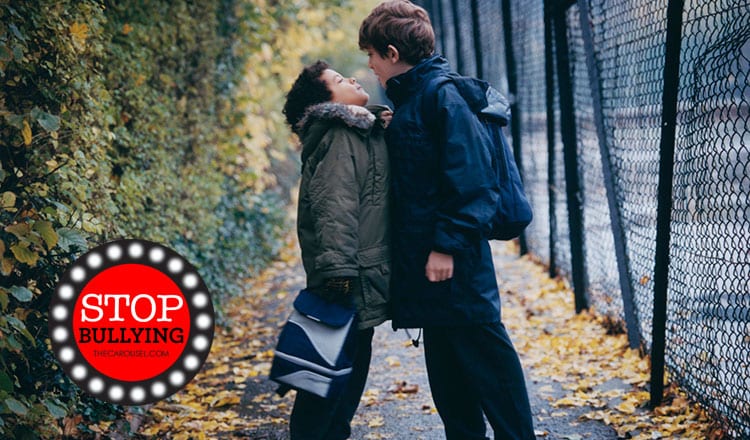In this Anti-Bullying series, The Carousel has spoken with The Alannah and Madeline Foundation, a national charity protecting children from violence and its devastating effects, and the National Centre Against Bullying, an initiative of The Alannah and Madeline Foundation, to give advice on your bullying experiences.
This week, Fiona, 35, asks for advice about handling her son, who has been bullying another child along with his friends, and not sure how to guide him…
When the bully becomes the bullied
Q. My son has been involved with other children bullying a classmate. I’ve tried explaining to him the effects on the other child, but he’s worried if he doesn’t join in with the other kids he’ll be the next victim. I’m concerned he’ll continue to bully or worse, become bullied later in life. What should I do?
A. According the The Alannah and Madeline Foundation, a new study just released highlights this exact point – where bullies go on to be bullied in the workplace later in life. In one of only a few studies of its kind, the Victorian arm of the International Youth Development Study examined the relationship between school and workplace bullying and highlight the disturbing trends facing young people and their future, with bullying rates in the workforce almost reaching 7 per cent.
This decade-long study of students in Victoria showed that cyberbullying was one of the main predictors of being bullied in the workplace, along with family conflict. Australian Catholic University Professor Sheryl Hemphill presented the findings of her 12-year longitudinal study from 2002, which tracked children from primary school to the workforce, at the National Centre Against Bullying Conference – Beyond the Schoolyard. Prof Hemphill said at the conference the rates of reported bullying at work were ‘very concerning’ and called for a greater focus on prevention and management of bullying during school years.
“One way to prevent workplace bullying is to ensure young people have good skills in emotional control before they leave school,” she said. “There are a number of evidence-based programs available to schools to teach these skills to their students.” It also helps if families which have conflict in their relationships with their children get assistance. “The way that families interact at home is really important. Assisting families to resolve conflict peacefully and to communicate effectively with each other is likely to reduce the chance the young person will be bullied in the workplace,” suggests Prof Hemphill.
The study of more than 500 young Victorians found that 6.5 per cent (almost 1 in 15) were victims of workplace bullying in 2012, up from 4.3 per cent in 2010. The increased rates of workplace bullying need to be addressed. “We assume that once kids leave school, bullying just disappears, but this suggests that as young people transition into the workplace, bullying is often continuing.” One solution, as suggested by National Centre Against Bullying Manager Sandra Craig, is that workplaces can prevent bullying by creating a safer and more inclusive workplace.
What is bullying?
According to the National Centre Against Bullying, an initiative of The Alannah and Madeline Foundation, bullying is defined as “when an individual or a group of people with more power, repeatedly and intentionally cause hurt or harm to another person or group of people who feel helpless to respond. Bullying can continue over time, is often hidden from adults, and will probably continue if no action is taken.” This is a frightening reality for any child and parent.
Dealing with bullies…
The NCAB sees bullying as “a relationship problem which requires relationship-based solutions” and advises that “these are best solved in the social environment in which they occur. In a child or young person’s life, this is most often the school.” This means the place to start is in the environment where it occurred.
The Alannah and Madeline Foundation is a national charity protecting children from violence and its devastating effects. For more information on bullying, visit www.amf.org.au
Need more help?
Great Australian resources for parents can be found at:
- The Alannah and Madeline Foundation
- Victoria Department of Education and Early Childhood Development
- Youth BeyondBlue
If your child needs to speak to someone about their experience Kids Helpline is Australia’s only free, private and confidential, telephone and online counselling service specifically for young people aged between 5 and 25, Kids Helpline can be contacted on 1800 551 800.
For more anti bullying tips click here.







